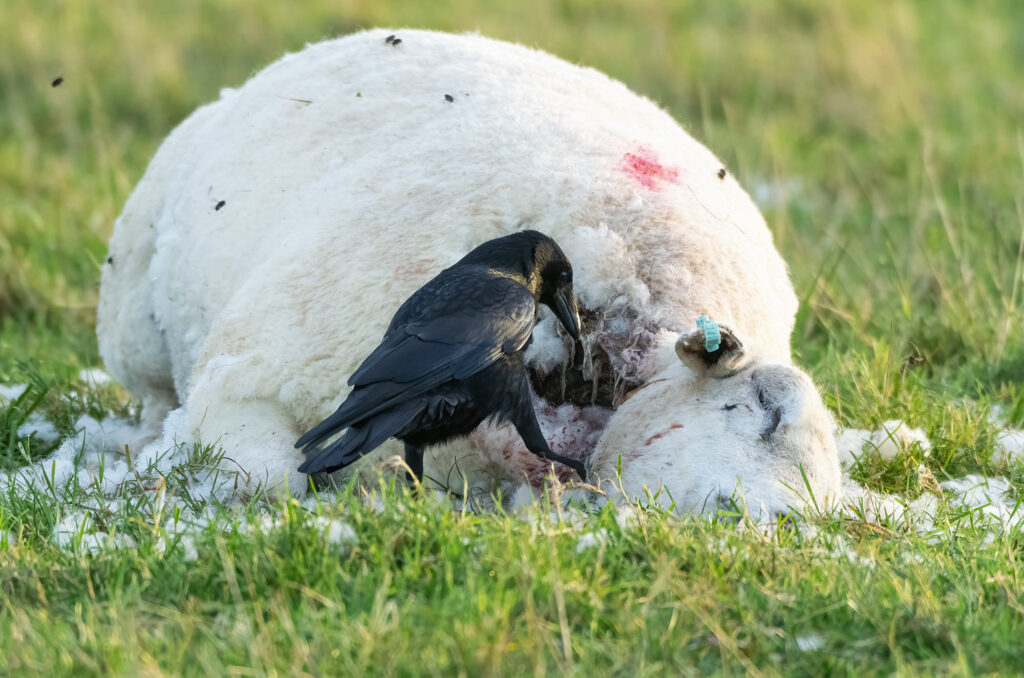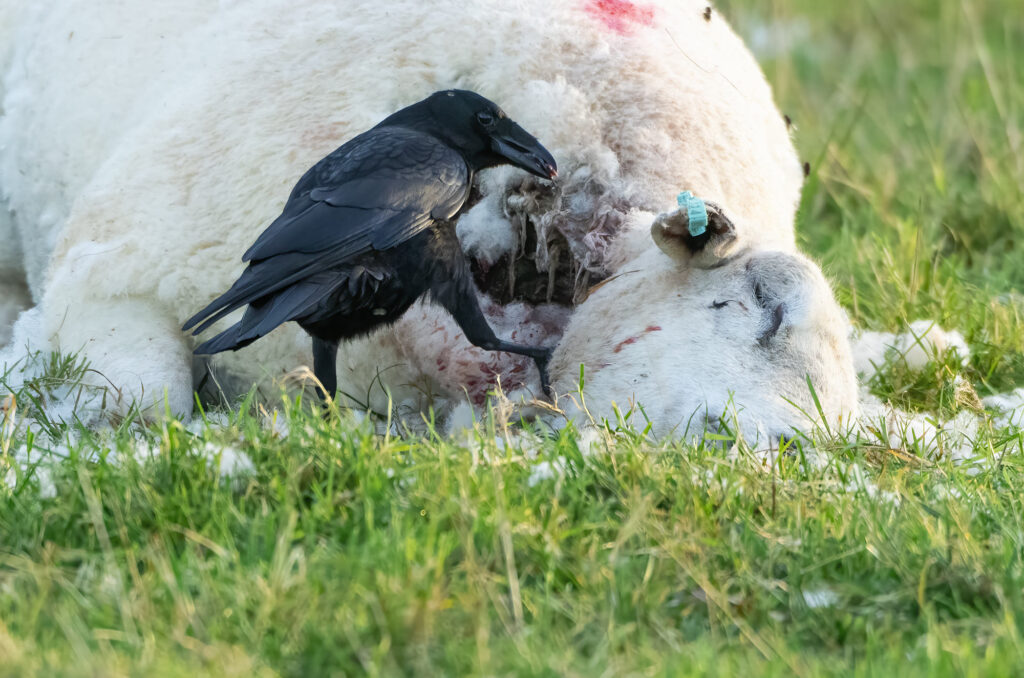Does anyone else get excited about spotting a dead sheep, or is it just me? On a recent walk at Lunderston Bay, I spotted one of the flock motionless in the field next to the path. My first thought probably should have been to feel sorry for the sheep and sympathy for the farmer but I immediately hoped to capture images of wildlife feeding on it. Before that thought had finished running through my brain, a carrion crow landed nearby and bounced towards the body.
Now, before we go any further, I have no idea how the sheep met its end. It may have died of natural causes. It may have been attacked by a dog off-lead (Sheepwatch UK estimated that loose dogs killed 15,000 sheep in 2016). It may have been brought down by something else. I won’t comment here on the potential wildlife ‘suspects’ that might have had a hand in the sheep’s demise. Corvids – particularly crows and ravens – get a lot of bad press regarding the threat they pose to livestock, sparking heated debates on their involvement in killing and maiming healthy animals. It is worth noting that farmers can apply for general licences to kill birds that are harming their animals, but they must explain the problem they claim is caused by the birds in question and say why non-lethal means of solving the problem won’t work – and rightly so. Birds must be killed only as a last resort.
Part of the hysteria surrounding the relationship between corvids and livestock is whipped up by the press publishing images showing innocuous behaviours – such as jackdaws removing parasites from the fur of animals – to illustrate stories of so-called attacks by corvids on these animals. For this reason, I need to explain the context of the images shown on this page. There is nothing to suggest that the carrion crow had anything to do with the death of the sheep.

Rather than being the villain of this piece, the carrion crow is providing a service. It is cleaning up – just like vultures and other species, like marabou storks, do on the African plains. This scavenging behaviour removes a rotting carcass from the environment, providing a similar function to corvids consuming food dropped in urban streets.
As there is a legal requirement to dispose of fallen livestock to stop the spread of disease, it is unusual to have the opportunity to photograph wildlife on a carcass like this. I would have loved to hang around until dusk to see if a fox showed up or whether the ravens we had heard in the distance decided to drop down to investigate. However, I was happy to settle with photographing the carrion crow scavenging. As the late afternoon light disappeared behind a bank of clouds, I pushed up my ISO to compensate. I worked by capturing a set of images some distance away before moving closer and capturing images at regular intervals. My main objective was to ensure that the crow could feed undisturbed. Taking my time to get closer led to photos that showed the crow pulling at the exposed flesh and the flies buzzing around the body. The session only lasted a few minutes. When a man came walking down the path with his dog, the carrion crow flew off.

These images will be a bit gruesome for many people, but opportunities to capture natural scavenging behaviour such as this are rare (no pun intended!) and not to be missed.

